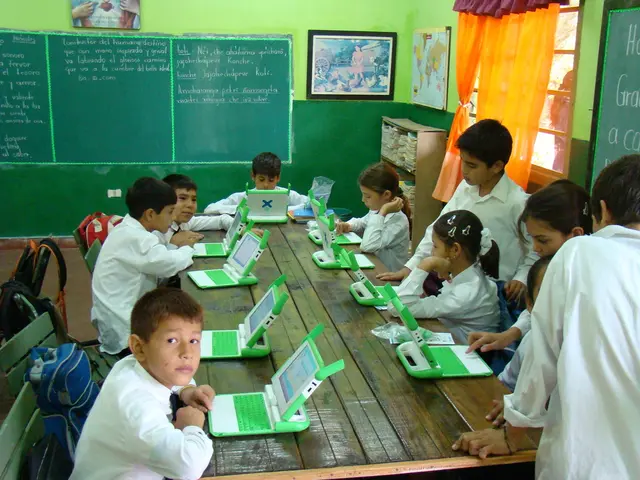Reduced oil and gas revenue share to 22% in proposed 2026 budget
Russia's economic landscape is undergoing significant changes, as the country navigates through various challenges and opportunities in the global market.
The oil price forecast for the near future has been revised downward, with the price per barrel expected to decrease from $69.7 to $56. This adjustment could have a substantial impact on Russia's economy, given the country's reliance on oil exports.
The fuel shortage issue in 10 Russian regions is another concern, potentially affecting the country's economic growth and stability.
Russia's state budget deficit for the current year has more than tripled, highlighting the need for financial adjustments. In response, the government proposes a reduction in dependence on various restrictions in the budget to achieve stable finances.
Inflation forecasts for Russia's socio-economic development have also increased, with the inflation rate projected to rise from 4.5% to 7.6%. This upward trend could further strain the country's economy.
Despite these challenges, Russia continues to maintain strong economic ties with key partners. Since the start of the EU oil embargo in 2022, India has paid Russia around €100 billion for oil supplies, trailing only China (€125 billion). This significant trade relationship is expected to continue, with Indian oil refining companies planning to increase their purchases of Russian oil in September 2025 by 10-20%, or 150-300 thousand barrels per day.
Hungary and Slovakia may also have increased their oil and gas imports from Russia in September 2025, encouraged by Russia's offer of a 5 USD per barrel discount on oil. These countries continue to receive Russian oil via the Druzhba pipeline and gas via the TurkStream pipeline, despite EU efforts to reduce dependency.
The expected GDP growth rate for the year is at 2.5%, a modest but positive indicator of economic stability. The expected expenses for the 2025 budget are 41,469 billion rubles, with revenues initially projected to be 40,296 billion rubles. However, the revised budget for 2025 now shows a deficit of 3,792 trillion rubles.
Russia's Finance Minister, Anton Siluanov, emphasized that the budget must be prepared to withstand external threats, such as financial attacks on the country. To combat this, Siluanov advocates for a budget that is less dependent on any single revenue source.
To address the increasing tax burden, Russian President Vladimir Putin has urged attention to combat tax evasion to boost federal budget revenues. The Federal Tax Service (FTS) has conducted on-site inspections, with only 2.2% of these resulting in no additional tax assessments. The amounts associated with these assessments have increased by a third.
In response to U.S. tariffs, Russia offered India a $5 per barrel discount on oil. On August 27, 2025, U.S. tariffs of 50% came into force for Indian exporters, potentially impacting this trade relationship.
The share of oil and gas revenues in Russia's federal budget for 2026 is expected to be around 20%, a decrease from the past when it was around 50%. The exact figure for the share of oil and gas revenues in Russia's federal budget for 2026 is 22%.
A binding memorandum has been signed for the construction of the 'Power of Siberia-2' gas pipeline, which could further strengthen Russia's energy ties with key partners. This project, along with the country's resilience in the face of various challenges, underscores Russia's commitment to maintaining a strong and dynamic economy.
Finally, the ruble exchange rate was adjusted from 96.5 to 94.3 rubles per U.S. dollar, a slight appreciation that could have implications for Russia's trade balance and overall economic health.
This article provides an overview of the current state of Russia's economy, focusing on key factors such as oil prices, budget deficits, inflation, and trade relationships. As the country continues to navigate through these challenges, it remains committed to maintaining a strong and dynamic economy.
Read also:
- chaos unveiled on Clowning Street: week 63's antics from 'Two-Tier Keir' and his chaotic Labour Circus
- Budget discrepancy jeopardizes highway projects' financial support
- Racing ahead in Renewable Energy Dominance: Changzhou, Jiangsu Pushes for Worldwide Renewable Energy Ascendancy
- Feeling disoriented or perplexed.







